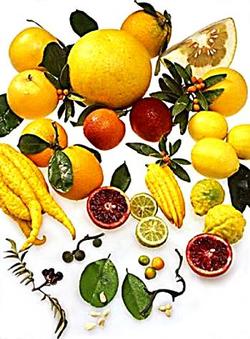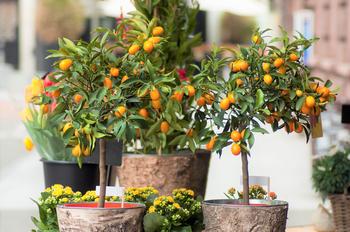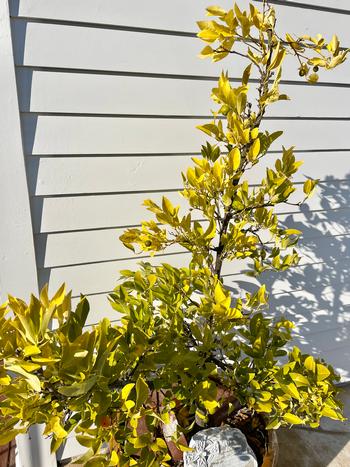Winter 2023
Growing Citrus in Pots
by David George

Are you shocked at the prices of oranges and lemons at the grocery store? Do you know that you can grow your own oranges and lemons in a patio container for just the cost of water, fertilizer, and time? Citrus trees are an attractive and rewarding addition to any patio garden. Most dwarf varieties grow well in containers and produce great quality fruit in winter months when other fruit sources are dormant. And the brightly colored orbs hang like holiday ornaments on a leafy green backdrop.

Winter is an active time of the year if you grow citrus in containers. Citruses are native to semi-tropical climates such as North Africa, Mexico, and Oceanic Asia. So, when our local nights turn cold and frosty, container-grown citrus require extra attention. Locations near your house on a patio or deck can help keep temperatures tolerable to your citrus on cold nights. But in Contra Costa it’s best to avoid the most cold-sensitive types of trees. In the order of most to least cold-hardy, the common citrus types we can grow in pots in our area are: kumquat, Meyer lemon, satsuma mandarin oranges, tangerines, navel oranges, Valencia oranges, Bearss limes, and citrons. Warm fall temperatures sweeten the fruit, while night temperatures of 42o F. or below turn the fruit skins from green to yellow or orange.
Glazed ceramic or plastic pots work well for citrus but choose a pot, with drain holes, that has a 18-24 inches top rim diameter. Select a bright, full sun location for the plant. Citrus trees need at least six hours of sun per day, preferably in a south-facing, wind-protected spot.
When planting, use a quality potting soil mix and amend it with compost because citrus requires a variety of nutrients. Late winter or early spring is a good time to plant, so the citrus roots have time to establish themselves before the following winter cold. The tree crown should be just above the soil line and the soil should be about 2” below the planter rim to allow for deep watering.

Citrus requires only occasional deep watering and soggy soil should be avoided. Even if the surface of your potting soil is dry, stick a finger or large screwdriver into the roots to check for moisture. If the roots are dry, they need to be watered. A wilted tree that doesn't perk up after watering may indicate excessive watering. Keep an eye on leaf color and shape, too. Yellow, cupped leaves may indicate too much water. For a potted citrus, watering deeply once a week is usually adequate or twice during hot, dry weather.
If a freeze warning is posted for your area, you can prepare by:
- Watering your potted citrus, since freezing soil will pull moisture from the plant roots,
- Placing a string of heat-producing Christmas lights in your potted trees to keep their interior temperatures up,
- Draping frost cover blankets or bed sheets over your trees at night then remove the coverings when the sun comes up. Don’t use plastic covers as they prevent the tree from breathing.
If a tree is damaged by frost, remove brown-spotted fruit but wait several months before pruning damaged limbs as they may bounce back. Citruses that are confined to pots need a regular source of supplemental nutrients. From March to September, water into the soil a slow-release nitrogen citrus fertilizer once a month.
We wish you a bounty of oranges, lemons, and other tasty citrus types in coming years!
For more information on growing attractive and fruitful potted citruses, click the link to the following UCANR online publication: https://homeorchard.ucanr.edu/Fruits_&_Nuts/Citrus/
